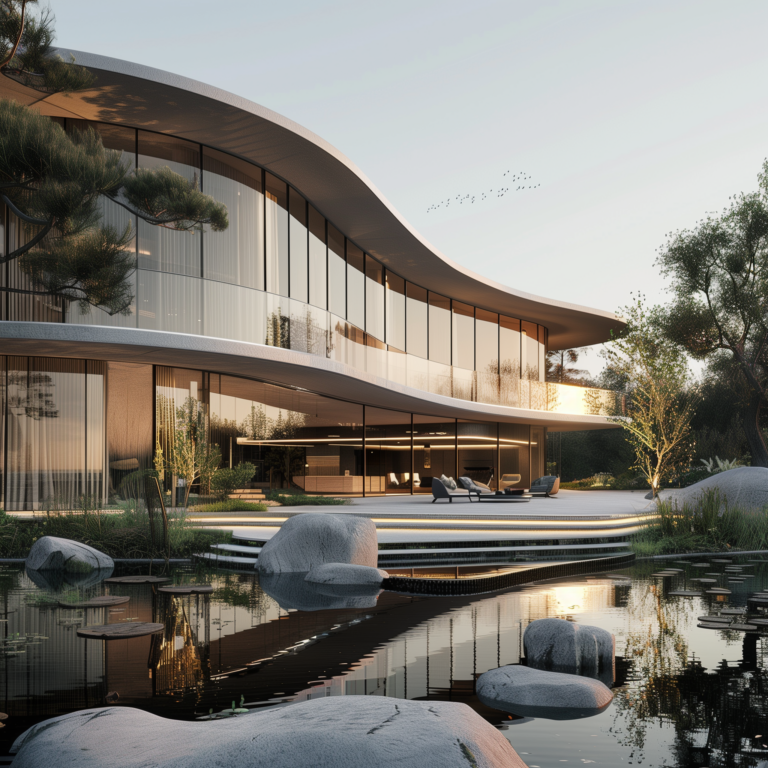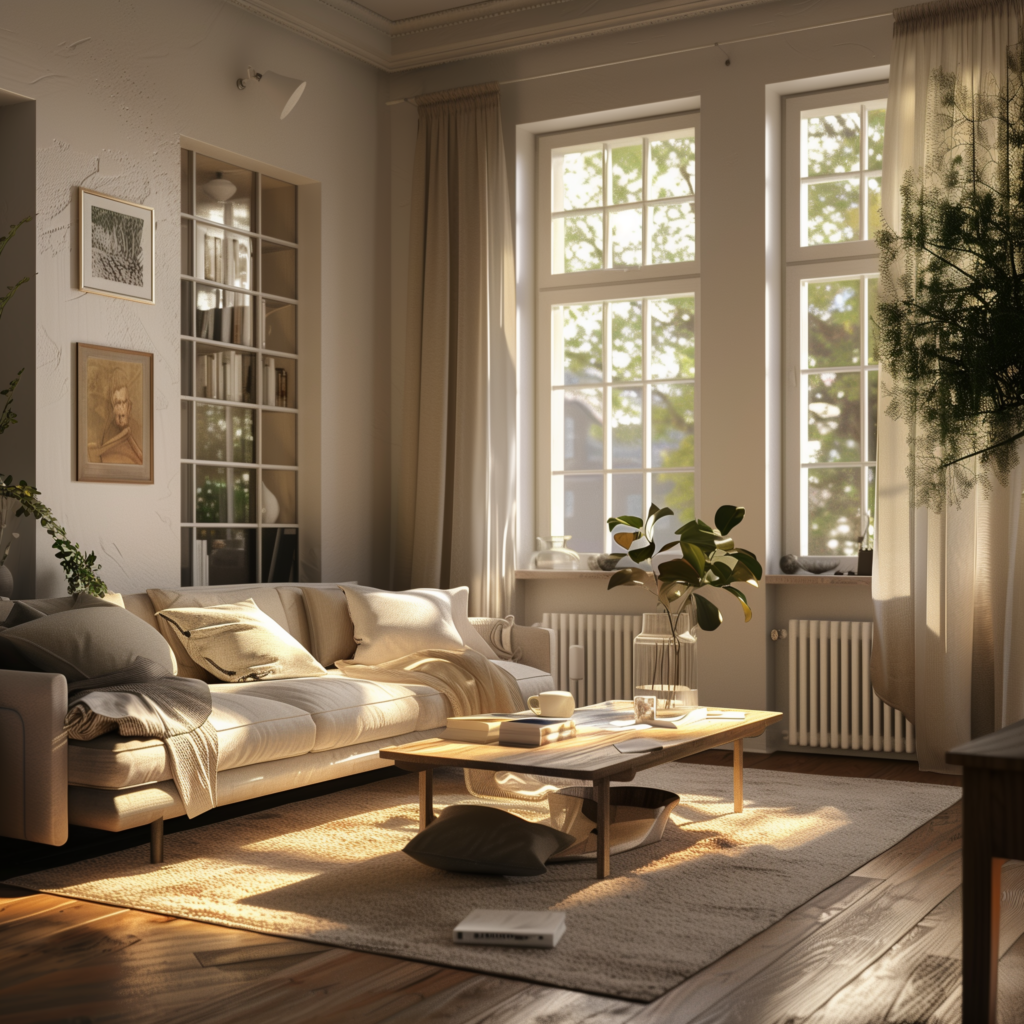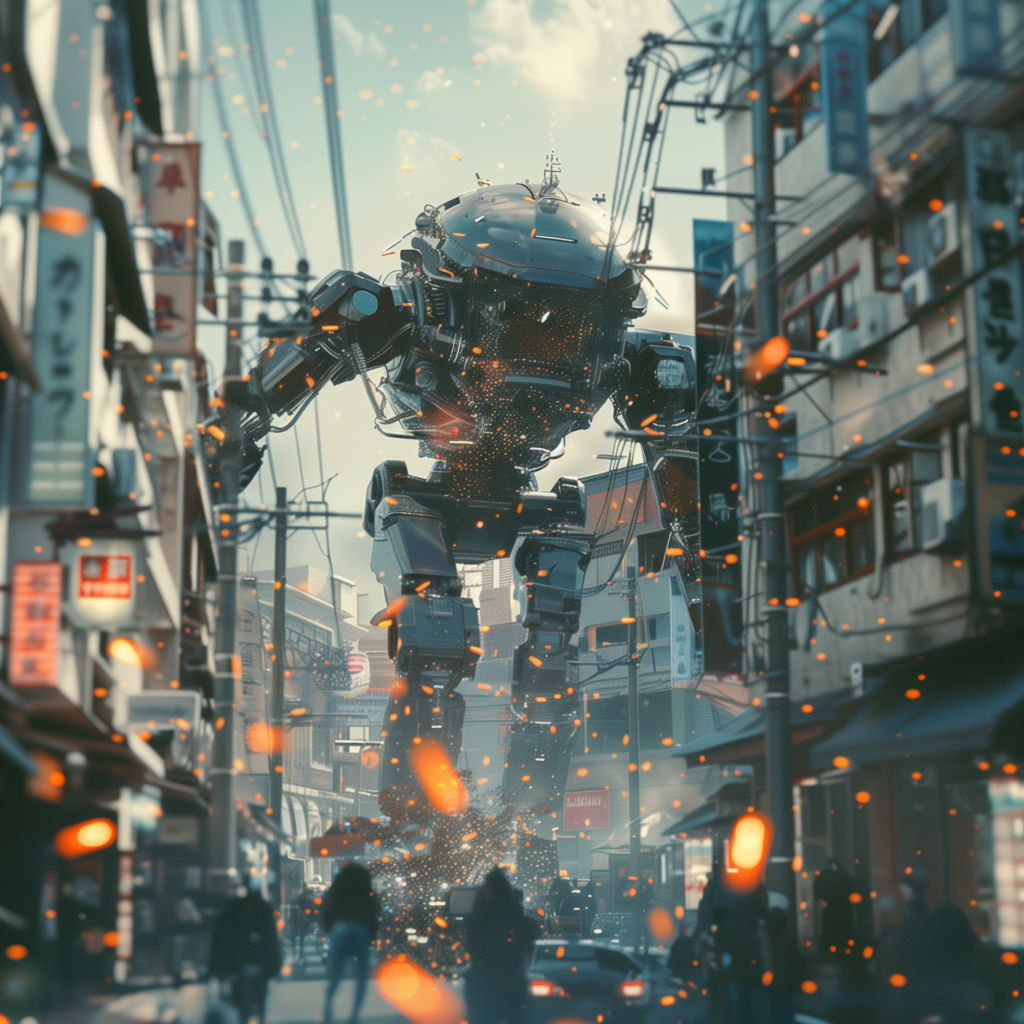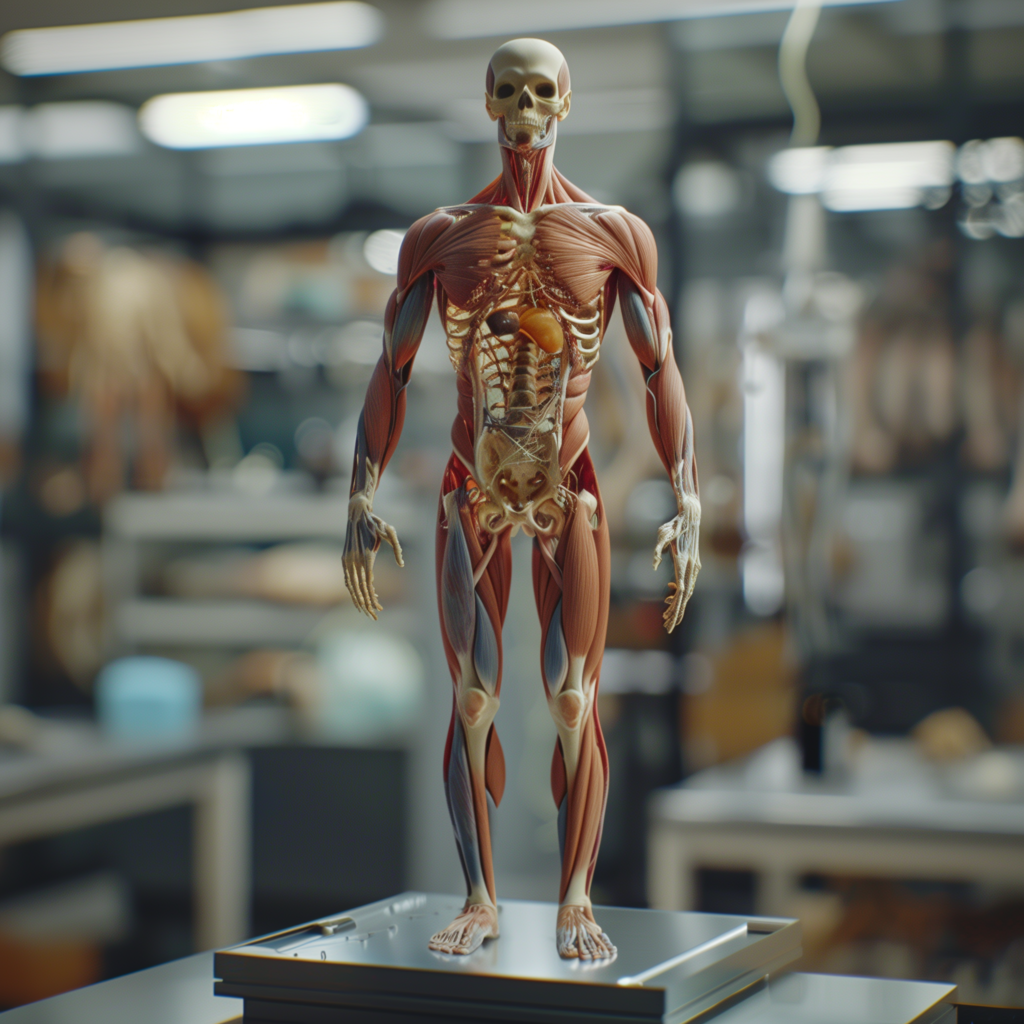V-Ray Guide: Elevate Your Design Projects
V-Ray is one of the most popular rendering plugins available today. Its main role is to transform 3D models into lifelike images or animations.
It integrates seamlessly with the most popular 3D modeling software – including Autodesk 3ds Max, SketchUp, Rhino, Revit, etc. Such compatibility ensures that V-Ray remains accessible to a wide range of users – from architects to game designers, and its versatility is unmatched.
What is V-Ray and What Does it Do?
At its core, V-Ray excels in creating photorealistic imagery. It achieves this through advanced algorithms. These algorithms simulate the physical behaviors of light and materials. For instance, V-Ray’s global illumination feature captures how light bounces off surfaces. This adds depth and realism to the scenes. Similarly, its physically accurate materials reflect light just like their real-world counterparts. This attention to detail is what sets V-Ray apart.
V-Ray is not just about static images but also brings animations to life. By rendering frame by frame, V-Ray produces smooth and high-quality animations. These are perfect for architectural walkthroughs or product design presentations.
V-Ray Features
One of V-Ray’s most praised attributes is its speed. Despite the complexity of rendering photorealistic images, V-Ray optimizes performance without compromising on quality. This efficiency is a boon for professionals working under tight deadlines. It allows them to iterate their designs faster and explore more design options within the same timeframe.
Let’s review other important V-Ray features below:
- Creative control: It comes equipped with a wide range of customizable settings. These settings control everything from lighting to texture detail. Users can tweak these settings to achieve the exact look they desire. Whether it’s adjusting the softness of shadows or the glossiness of a surface, V-Ray puts the power in the hands of the creator.
- Scalability: It can handle projects of any size, from a simple product design to a complex urban landscape. This scalability ensures that V-Ray remains a reliable tool throughout a professional’s career. As their projects grow in scope and complexity, V-Ray grows with them.
- Full suite of tools for photorealistic visuals: It works well with leading 3D modeling programs, has advanced rendering features, and is efficient, making it popular with experts. Architects visualizing buildings or designers working on prototypes find V-Ray essential. It provides the necessary tools for realistic representations of their concepts.
- Global illumination capabilities: This technology mimics real-world light interaction, making images look natural. Architects and designers can produce renderings that accurately show their vision. Every light and shadow detail is precisely captured.
- Real-time rendering support: This function is crucial for professionals requiring fast project modifications. It permits instant visualization of alterations, aiding architects and designers in examining various concepts. This promotes a dynamic, interactive design approach, keeping creative control constant.
- Extensive preset library: These presets help professionals streamline their rendering work. They provide a starting point for exterior scenes or product visualizations, which can be customized. This saves time and gives more creative control over the outcome.
- Compatibility with various 3D modeling software: It seamlessly integrates with industry-standard tools, ensuring that 3D designers, architects, and graphic designers can incorporate V-Ray into their existing workflows without disruption. This compatibility underscores V-Ray’s role as a versatile and powerful tool supporting professionals’ creative visions across disciplines.
- Render settings: The render settings in V-Ray are another aspect that professionals appreciate. With granular control over every aspect of the rendering process, users can adjust lighting, quality, objects, and more to achieve the exact look they desire. This level of customization ensures that every scene or project can be fine-tuned to meet specific visual requirements, enhancing the overall realism and impact of the images produced.
- Optimized to handle motion with precision: It ensures that animations are rendered with smooth transitions and lifelike motion, making it the perfect choice for animation studios and graphic designers. The ability to render animations with such high quality and realism sets V-Ray apart in the competitive field of rendering software.
V-Ray, a powerhouse in rendering software, is equipped with several features designed to meet the needs of professionals across various industries. From architectural renderings to animations and even VFX rendering, V-Ray’s features ensure that every project achieves photorealistic rendering with ease and efficiency.
Benefits of Using
V-Ray
V-Ray’s photorealistic rendering capabilities are unparalleled. It allows users to produce incredibly lifelike images and animations. This level of realism is essential for architectural renderings and exterior scenes. It helps clients and stakeholders visualize the final project clearly.
Learn more about the V-Ray benefits below:
- Efficiency in the design process: With its real-time rendering feature, professionals can see the effects of their changes instantly. This immediate feedback loop makes it easier to explore different design ideas and lighting settings, and it significantly reduces the time spent on revisions.
- Creative controls: Users can adjust a wide range of parameters to achieve the desired outcome. Whether tweaking the light quality or refining the texture of objects, V-Ray puts the power in the hands of the creator. This level of control is crucial for designers and architects with a specific vision for their projects.
- Built-in presets: They provide a solid foundation for various rendering tasks, saving time and effort, especially for those new to rendering. They also serve as a learning tool, helping users understand the impact of different render settings.
- Ability to handle complex animations: It ensures smooth, high-quality outputs that bring design ideas to life. The software’s performance and output quality make it the perfect choice for producing photorealistic imagery in motion.
- Software compatibility: This compatibility ensures that 3D artists, graphic designers, and architects can integrate V-Ray into existing workflows. It supports their creative visions without forcing them to learn new tools.
- Global support community: Users can access a wealth of knowledge, tutorials, and forums. This community support is crucial for troubleshooting and learning advanced techniques. It ensures users maximize the software’s capabilities and stay updated on the latest features.
V-Ray enhances the design process for architectural renderings, animations, or exterior scenes. It allows professionals to create and visualize confidently, bringing their design ideas to life with stunning realism.
This way, it helps professionals to visualize and create new designs with confidence.
V-Ray Usage Across Industries

Architectural Renderings
In architecture, V-Ray is essential for producing architectural visuals. These visuals help architects and clients see design ideas with great realism. V-Ray’s lighting and render settings show how light affects materials and surfaces, making design concepts vivid. This is vital for exterior and interior designs, as light’s effect on space and ambiance is significant.
V-Ray is mainly used in architectural rendering, turning design concepts into impressive visuals. This software is crucial in the design process. It allows architects and designers to see and improve their concepts with unmatched realism.
In architectural renderings, V-Ray excels by offering photorealistic rendering capabilities. This feature is crucial for architects who aim to present their projects in the most realistic light possible. The rendering settings in V-Ray allow for fine control over lighting, shadows, and textures, ensuring that every architectural rendering accurately conveys the intended design vision.

Interior Design
V-Ray facilitates the interior design rendering process by allowing designers to visualize their ideas precisely. The software’s ability to simulate natural and artificial light helps create real and inviting spaces.
This is invaluable for presenting design concepts to clients, enabling them to explore and understand the proposed layouts and material choices.

Graphics and 3D Designs
V-Ray is the perfect choice for creating detailed animations and exterior renderings in the entertainment industry, particularly in animation. Its ability to render complex lighting scenarios and materials makes it a go-to solution for studios producing photorealistic imagery that captivates audiences.
V-Ray provides graphic designers and 3D artists with tools for creative exploration and control. It helps design prototypes or create detailed 3D art with a smooth workflow. V-Ray’s render settings and presets aid in achieving the desired results. The simulated light and shadow quality by V-Ray enhances image depth and realism, improving project impact.
V-Ray’s support for real-time rendering is a game-changer. This feature allows for immediate visual feedback, enabling designers to visualize changes on the fly.
It significantly speeds up the design process, allowing for more iterative exploration of design ideas. The quality of renderings produced by V-Ray helps visualize complex datasets or algorithms.

Animation Studios
For animation studios, V-Ray’s robust animation capabilities are a game-changer. It renders images and scenes with quality and realism that captivates audiences. The creative control it offers allows animators to craft detailed and immersive worlds.
Whether for movies, commercials, or video games, V-Ray helps studios create compelling narratives that resonate with viewers. Such projects often require a lot of computing power, so V-Ray render farm services are often the preferred choice of professionals when it comes to rendering.

Educational Sector
Last but not least, V-Ray is widely used in the educational sector, where it supports teaching design and rendering principles. By providing students with access to real-time rendering and a wide array of render settings, it facilitates a hands-on learning experience.
Students can explore various lighting techniques and render settings, gaining practical skills to serve them in their future careers.
V-Ray’s industry-specific applications underscore its flexibility and power as a rendering tool. Whether it’s for architectural renderings, animations, product visualization, interior design, data visualization, or education, V-Ray enhances professionals’ creative visions.
It allows them to confidently create, explore new possibilities, and achieve photorealistic imagery that sets their work apart.
Optimizing Workflow With V-Ray
What we’ve said so far for V-Ray brings a basic idea of its capabilities. It is not just a rendering tool, but a gateway to bringing creative visions to life with unmatched realism and efficiency.
Below, you can find the key points at which V-ray can be used to maximize your project potential:
- Enhancing realism in architectural visualization: For architects, V-Ray’s global illumination and photorealistic rendering capabilities ensure your designs’ details are captured with lifelike accuracy. This aids in client presentations and design validations, making V-Ray an indispensable tool in the architectural process.
- Bringing animation to life: Animation studios rely on V-Ray for its ability to render complex animations and scenes with precision. The real-time rendering feature allows immediate feedback, making the creative process more fluid and dynamic.
- Product design and visualization: Designers utilize V-Ray’s built-in presets and customizable product renderings to showcase products in the best possible light. This not only enhances marketing materials but also aids in design decision-making.
Last but not least, V-Ray optimizes the design process with real-time rendering and “global illumination,” allowing quicker iterations and more informed design choices. This efficiency is crucial for meeting project deadlines and exceeding client expectations.
V-Ray stands out as a powerful rendering software that has revolutionized the way we bring our creative visions to life. With its advanced features, intuitive interface, and unparalleled rendering quality, V-Ray has become a go-to choice for professionals across various industries.
V-Ray offers all the tools you need to produce stunning visuals and speed up your creation process.
Frequently Asked Questions
What is V-Ray used for?
V-Ray is used for creating photorealistic renderings and animations in architecture, design, and animation, enhancing project realism and quality.
Can I use V-Ray for free?
V-Ray offers trial versions, but for full access, a license purchase is required. Educational versions may be available for students and educators.
Why is V-Ray so popular?
V-Ray is popular for its advanced rendering capabilities, including global illumination and real-time rendering, which provide unmatched realism and efficiency in various professional applications.
Does V-Ray use GPU?
V-Ray leverages GPU acceleration to enhance rendering speeds and efficiency, making it suitable for handling complex projects.
